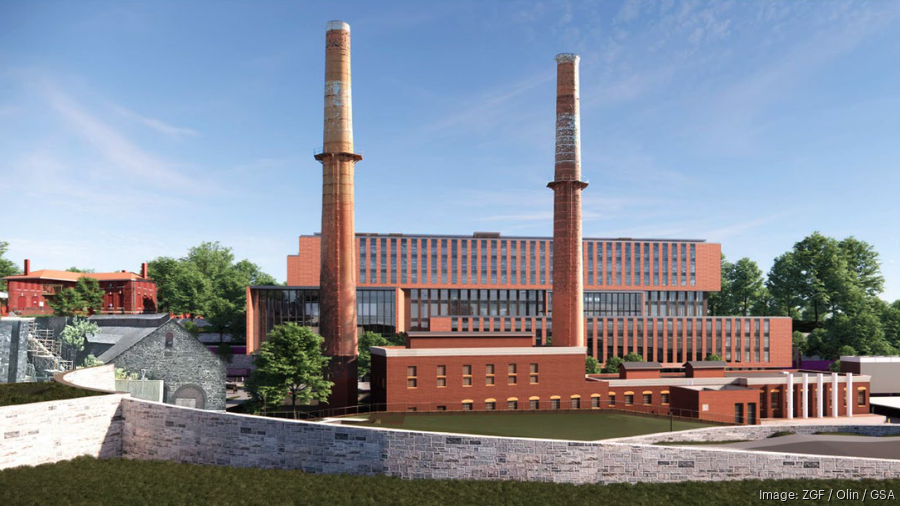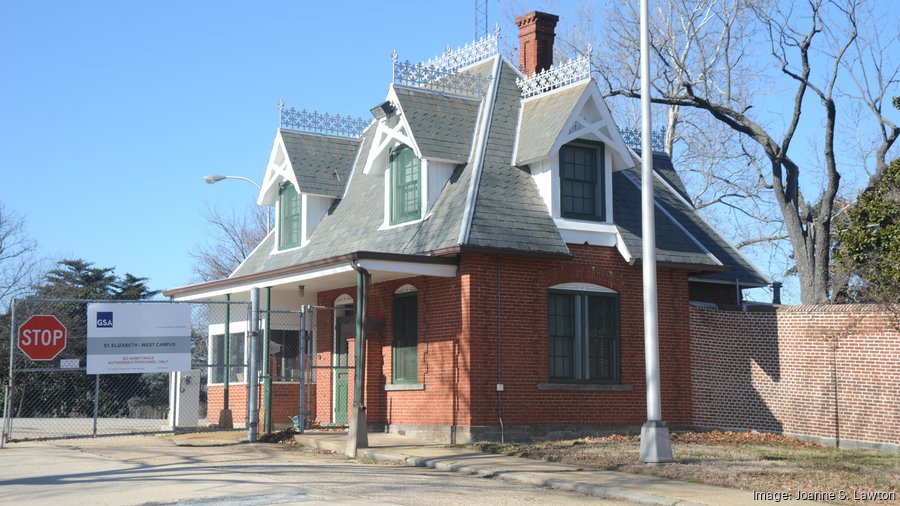Listen to this article 5 min
See Correction/Clarification at the end of this article.
The General Services Administration failed to identify, mitigate or eliminate asbestos-containing material, including broken floor tiles, in an occupied building on the St. Elizabeths West campus, leaving employees "potentially exposed to asbestos for a prolonged period," a new report finds.
The GSA's Office of the Inspector General launched its investigation following a hotline complaint it received that raised concerns over the management of asbestos-containing material, or ACM, at Building 40. The nearly 140-year-old, 6,615-square-foot building was most recently used by the GSA's Public Buildings Service National Capital Region, or PBS NCR, to house roughly 25 employees who supported property management functions at Southeast D.C.'s St. E's West, the home of the U.S. Coast Guard and the Department of Homeland Security's top brass.
Per the IG report, the PBS "did not maintain comprehensive and reliable asbestos records" for Building 40, did not take appropriate measures to eliminate or mitigate ACM and failed to notify building occupants of the presence and location of ACM hazards. Those failures, the IG reported, hindered the GSA's "ability to effectively manage asbestos" in Building 40 and placed "building occupants, visitors, and contractors at risk of asbestos exposure."
Asbestos, a once-common building material, is now best known for its adverse health effects if the fibers are allowed to escape into the air. Inhaling those fibers can lead to serious lung conditions including scarring, difficulty breathing and increased risk of several cancers. The October 2022 hotline complaint "identified potential health concerns caused by the possibility that the staff suffered prolonged exposure to asbestos in Building 40, noting that some former employees who worked in the building have experienced significant medical issues, including cancer," according to the report.
The GSA, in its response to the audit, agreed with virtually all of its findings, and detailed what actions it has taken in response, including additional inspections of Building 40, additional tenant notifications and the wide dissemination of the GSA's asbestos policy — the IG found "significant gaps in PBS NCR personnel’s knowledge and understanding of asbestos management requirements." The agency did not immediately respond to requests for additional comment.
Building 40 was last regularly occupied in March 2020. That month, the IG reported, it was vacated due to the Covid-19 pandemic. Two years later, PBS staff "were instructed to enter Building 40, collect any personal belongings they left in the building prior to the COVID-19 pandemic, and relocate into trailers on the St. Elizabeths West Campus." The move "was related to ongoing life and safety concerns, including water intrusion into Building 40 and a need for renovation."
Today, workers still enter Building 40 on occasion to access an electrical closet for the IT network, per the GSA's audit response. The PBS has agreed to send annual tenant notifications as long as people continue to the enter the building.
According to the GSA report, there were at least two incidents of potential ACM exposure involving occupants of Building 40.
The GSA's PBS acquired Building 40 from the Department of Health and Human Services in 2004. Three years later, a "baseline inspection" was conducted in a search for asbestos-containing materials. That inspection "identified ACM in several areas, including pipe insulation, mudded pipe fitting, brown mastic on ceiling tiles, green floor tiles, and black floor tiles." In 2015, a re-inspection found damaged ACM floor tiles in a often-accessed second-floor supply closet adjacent to employee workstations and recommended their removal, but the PBS "did not take corrective action until 3 years later in August 2019," the IG found.
"As a result, PBS NCR employees in the facility were potentially exposed to asbestos for a prolonged period," the report states. "The PBS NCR St. Elizabeths West Campus Field Office acting director told us that they did not abate the ACM floor tiles in the closet immediately because they were not aware of the 2015 asbestos report and its recommendation to abate the ACM."
In March 2019, the PBS launched a $40,000 repair project to replace carpet on Building 40's second floor. According to the IG report, the GSA did not notify the contractor about the presence of ACM in the work area. "Because PBS NCR did not comply with these requirements, contractor employees accidentally damaged ACM during the project. This created an exposure event, in which the asbestos was released into the air and potentially inhaled by contractor employees and Building 40 occupants."
The PBS then "initiated an emergency asbestos remediation project that cost an additional $22,782," the IG found.
"Because of the significant health and safety consequences arising from improper asbestos management, PBS NCR must take immediate action to assess its asbestos management program and comprehensively train personnel to ensure that they understand their roles and responsibilities," the IG concluded, adding it has "previously reported on serious concerns over PBS’s management of environmental hazards" going back nearly a quarter century.
The 176-acre St. E's West campus totals 1.1 million square feet, with more development to come — new headquarters buildings for the Cybersecurity and Infrastructure Security Agency and Immigration and Customs Enforcement (see renderings in gallery below), plus a parking garage, are next up. The DHS consolidation, estimated to clock in at $2.8 billion, is one of the largest federal office construction efforts in recent memory, but it has experienced multiple delays, tweaks and cost overruns.






The new headquarters of the Cybersecurity and Infrastructure Security Agency will be constructed into a ravine on the St. Elizabeths West campus, adjacent to a historic power plant.
Correction/Clarification
An earlier version of this article incorrectly reported which agency launched the asbestos investigation. It was the General Services Administration's Office of the Inspector General.



